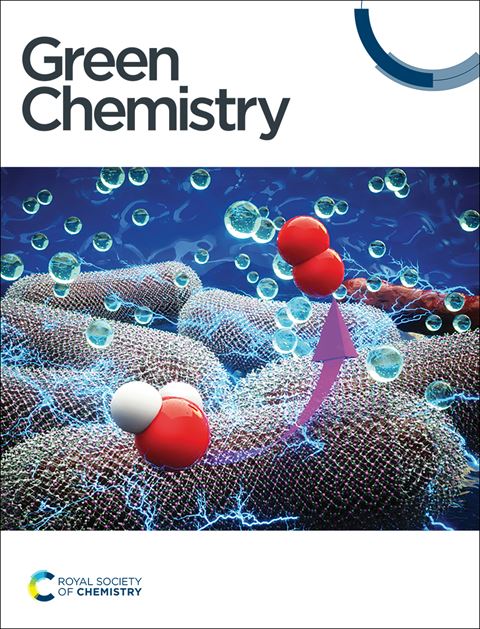A Ni(OH)2 nanosheet array modified with Fe–phytate complex layer as a corrosion resistant catalyst for seawater electrolysis at ampere-level current density†
IF 9.2
1区 化学
Q1 CHEMISTRY, MULTIDISCIPLINARY
引用次数: 0
Abstract
The implementation of electrochemical seawater electrolysis necessitates the development of electrocatalysts that not only exhibit high performance but also possess robust resistance to chlorine-induced corrosion. Herein, we report a Ni(OH)2 nanosheet array modified with an Fe–phytate complex layer through a straightforward spray technique for high activity and strong corrosion resistance toward seawater electrolysis. The constructed Ni(OH)2–PA–Fe requires an overpotential of merely 380 mV at a current density of 1000 mA cm−2 and exhibits extraordinary stability in alkaline seawater, maintaining stable performance for over 1200 hours at a current density of 1000 mA cm−2. Experimental analyses reveal that the exceptional OER performance stems from the increased number of active sites due to defect formation, electronic structure modulation by iron phytate modification, and Cl−-repellent layers formed by negatively charged phosphate groups on the electrocatalyst surface. This work offers new possibilities and a cost-effective approach for developing highly efficient catalysts with enhanced corrosion resistance for seawater electrolysis.

植酸铁络合层修饰的Ni(OH)2纳米片阵列作为电流密度†下海水电解的耐腐蚀催化剂
为了实现电化学海水电解,需要开发出性能优异且耐氯腐蚀的电催化剂。在此,我们报道了一种用植酸铁络合物层修饰的Ni(OH)2纳米片阵列,通过直接喷雾技术具有高活性和强耐海水电解腐蚀性。构建的Ni(OH)2 - pa - fe在1000 mA cm - 2的电流密度下只需要380 mV的过电位,并且在碱性海水中表现出非凡的稳定性,在1000 mA cm - 2的电流密度下保持1200小时以上的稳定性能。实验分析表明,特殊的OER性能源于缺陷形成、植酸铁修饰的电子结构调制以及电催化剂表面上带负电荷的磷酸基形成的Cl−排斥层。这项工作为开发具有增强耐腐蚀性的高效海水电解催化剂提供了新的可能性和经济有效的方法。
本文章由计算机程序翻译,如有差异,请以英文原文为准。
求助全文
约1分钟内获得全文
求助全文
来源期刊

Green Chemistry
化学-化学综合
CiteScore
16.10
自引率
7.10%
发文量
677
审稿时长
1.4 months
期刊介绍:
Green Chemistry is a journal that provides a unique forum for the publication of innovative research on the development of alternative green and sustainable technologies. The scope of Green Chemistry is based on the definition proposed by Anastas and Warner (Green Chemistry: Theory and Practice, P T Anastas and J C Warner, Oxford University Press, Oxford, 1998), which defines green chemistry as the utilisation of a set of principles that reduces or eliminates the use or generation of hazardous substances in the design, manufacture and application of chemical products. Green Chemistry aims to reduce the environmental impact of the chemical enterprise by developing a technology base that is inherently non-toxic to living things and the environment. The journal welcomes submissions on all aspects of research relating to this endeavor and publishes original and significant cutting-edge research that is likely to be of wide general appeal. For a work to be published, it must present a significant advance in green chemistry, including a comparison with existing methods and a demonstration of advantages over those methods.
 求助内容:
求助内容: 应助结果提醒方式:
应助结果提醒方式:


